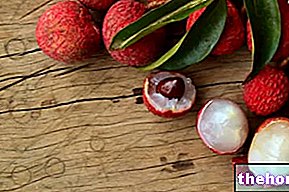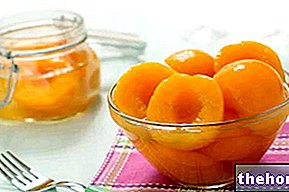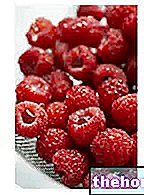Introduction
“Tenacious monument of the deserts”: it is with this metaphor that the character of the fig tree of India is best described, a fruit crowned with thorns that survives the arid and dry desert temperatures.
For a long time, the fig tree of India represented a symbol of the Aztec tradition: today it is a source of interest not only in the food and agricultural fields, but also in the phytotherapeutic and cosmetic fields.

Origin of the term
The botanical name of the prickly pear is Opuntia ficus-indica: this demonination, still current, was qualified by Miller in 1768, but the name probably derives from Christopher Columbus, who in 1493 believed he had landed in India.
The fig of India is a native plant of Mexico: the importance of this plant for Mexicans is such that it embodies the symbol of the country, so much so that it even appears in the flag of the Mexican Republic. Opuntia is currently widespread throughout America, in the Mediterranean (in particular Sicily), in Africa, Asia and Australia.
Features
The Indian fig belongs to the Cactaceae family and represents a succulent plant that can reach up to 5 meters in height.
The cladodes (or shovels, improperly called leaves) make up the stem and group together forming branches. They are covered with a waxy film that protects the plant from excessive heat, preventing transpiration and protecting it from a possible attack by predators.
After four years of development, the cladodes undergo a lignification, forming a real trunk. Even opuntia, like all cacti, delegates the chlorophyll function to the stem and not to the leaves; these are very small and are found only in the young blades. The areoles, at the base of the leaves, develop into thorns or particular roots called glochids , or in flowers.
The fleshy fruit is also covered with areoles; some varieties of prickly pear may not have thorns: the color of the fleshy berry may have a yellow-orange, red or white color. The taste is sweet and pleasant.
Nutritional values
The nutritional composition of the leaves of the prickly pear is very different from that of the fruit and seeds.
- Chemical composition of the "leaves'
The cladodes of the plant contain a substantial amount of water, but also represent a precious source of trace elements (potassium, magnesium, calcium, iron, silica), nutrients (especially crude fiber, carbohydrates) and vitamins, in particular vitamin C and precursors of vitamin A (beta-carotene, lutein and alpha-cryptoxanthin). In the juice of the leaves there is no shortage of thiamin, riboflavin, niacin, vitamin B6 and folate. In addition, many amino acids are found in the leaves of the prickly pear, including 7 essential ones.
- Chemical composition of fruit / seeds
If the seeds are rich in lipids and proteins, the fruits overflow with simple sugars such as glucose and fructose. In the fruit there are also antioxidant substances such as indicaxanthin and betanin, which counteract the oxidative processes.
Customs and traditions
There are many uses of the fig tree of India: many customs have their roots in the ancient Aztec people: already at the time, the Aztecs used the leaves of the fig tree of India to raise an insect, the Dactylopius coccus Costa, which was used to obtain cochineal red. The red color was extracted from the body of the dried insect, which is still in great demand in the cosmetic, pharmaceutical, textile and food sectors.
At one time, the juice obtained from the leaves was used as a lubricant to facilitate the movement of large stone boulders; moreover, associated with honey and egg yolk, it seemed to be useful against burns. It could also be used to relieve inflammation, dislocations and tonsillitis.
Thanks to its vitamin resources, the fig of India was also used by the conquerors of Mexico to combat scurvy, a vitamin C deficiency disease.
The flowers, in contemporary Mexican medicine, are used to counteract cystitis and as diuretics; the fruits help to block diarrhea and exert astringent actions, while the fibers and mucilages are still used as protectors of the gastric mucosa and as regulators of glycaemia.
Opuntia boasts hypocholesterolemic properties thanks to the fibrous component of the leaves; the mucilages, in addition to conferring gastroprotective properties to the homonymous plant, also give it anti-inflammatory and healing properties. The positive effect exerted by soluble fibers in decreasing plasma cholesterol and delaying the absorption of glucose has been demonstrated.
In popular Sicilian medicine, a decoction of dried opuntia flowers is recommended to counteract renal colic.
In the case of surface wounds, the mucilage of the cladodes could be exploited for their emollient, moisturizing and anti-inflammatory properties.
The use of the fig of India is particularly interesting also in cosmetics, for the production of humectant creams, shampoos, soaps, lotions with astringent action, and it seems to favor hair growth.
Properties of the prickly pear
Recently, in the Department of Medicine in New Orleans (United States) a possible effect has been demonstrated in the reduction of symptoms following alcoholic intoxication.
The antioxidant action of the Indian fig was also demonstrated by a study carried out in the Department of Pharmaceuticals, Toxicology and Biological Chemistry of the University of Palermo, and in the Department of Pharmacy of the University of Jerusalem: betanine and indicaxanthin are the two antioxidant substances responsible for the anti-radical action.
The diuretic and cytoprotective activities also have a foundation of truth: these actions attributed to the fig of India have been evaluated by the Biological Pharmaceutical Department of the Faculty of Pharmacy of the University of Messina: precisely, the diuretic activity is enhanced by the infusion of the fruit. and not from the flower.
Food use
The alimentary use of the opuntia refers to the fruits, rich in sugars, calcium, phosphorus and vitamin C; they can be used fresh or for the manufacture of liqueurs, jellies, jams, sweeteners and juices. Even cladodes are exploited by the food industry: they are preserved in vinegar or candied.
The prickly pear can also be used as forage.
In Sicily there is the tradition of producing a particular syrup with a seedless pulp: it is used to prepare typical rustic sweets.
Recommendations
The fruit should not be eaten in excessive quantities: it could cause intestinal blockage, which is why it is not recommended for people suffering from intestinal diverticula.
Summary
TO FIX THE CONCEPTS ...
PROPERTY"
Leaves (popular tradition)
They were used for the cultivation of the insect Dactylopius coccus Costa for the production of the cochineal red color
Leaves (Aztec tradition)
Used as a lubricant to facilitate the movement of stone boulders
Ficus juice with egg yolk and honey (ancient tradition)
It was used to relieve sunburn
Juice (ancient peoples)
Decreases inflammation and tonsillitis. Remedy for scurvy
Flowers (currently)
Used against cystitis and as diuretics
Fruits
Used for astringent action against diarrhea
Mucilage (internal use)
Protective action of the gastric mucosa
Mucilage (usotopic)
Emollient, anti-inflammatory, moisturizing: used to relieve wounds
Fibers
The fig of India (the cladodes) exerts a precious cholesterol-lowering action
Cladodes (topical use)
Anti-inflammatory and healing action
Decoction of dried ficus flowers
Action exerted in the kidney, against colic. Diuretic properties.
Juice
Treatment of the after-effects of alcoholic intoxication
In cosmetics
The prickly pear is used to promote hair growth, in creams, lotions, shampoos and soaps
Select plant Fir Acacia Acerola Sorrel Yarrow Yarrow Yarrow Aconito Adatoda Garlic Agnocasto Agrimonia Alchemilla Alkekengi Aloe Altea Witch Hazel Ammi or Visnaga Pineapple Andrographis Anemone Pulsatilla Angelica Anise Star Anise Japanese Star Anise Bitter Orange Bitter Areca Arnica Harpagophytum Arpagophyte Artemisia Asteragus Basil Asparagus Asparagus Peruvian Asparagus Asparagus Asparagus Hawthorn Boldo Borage Shepherd's Purse Boswellia Bucco Butea superba Cocoa Coffee Cajeput Calamus Calamus Marigold Camedrio Chamomile Roman Chamomile Camphor Cinnamon Ceylon Maidenhair Capuchin Artichoke Cardamom Cardiac Thistle Asian Thistle Carvi Cascara Cassia Catecu Catha Cabbage Celandine Chicory Centaurea Cinnamon Cypress Celandine Chives Cypress Coca Cola Colchico Combreto Condurango Comfrey Coriander Cranberry Barberry American Chrysanthemum Cumin Turmeric Damiana Digital Dioscorea Drosera Dulcamara Dunalilella Echinacea Eder a Ephedra Elenio Eleutherococcus Helichrysum Evening primrose Horsetail Alfalfa Erica Euphrasia Erisimo Escolzia Eucalyptus Farfara Farfaraccio Calabar bean Fenugreek Fennel Phytolacca Frangola Ash Fumaria Japanese Mushrooms Galega Ganoderma lucidum Garcinia Cambogia Mulberry Gentian Broom Ginkgo Ginkgo Guipana Guipana Gynestra Ginkgo Hibelia Gymnasium Hibiscus Guarulp St. John's Wort Horse Chestnut Ispaghul Hyssop Jaborandi Kava kava Konjac Laminaria Cherry Laurel Lavender Lemongrass Lespedeza Lovage Icelandic Lichen Lemon Flax Lippia Licorice Lobelia Hops Maca Marjoram Maize Mallow Manna Marrubio Marrubio d "water Matè Melaleuca Meliloto American Lemon balm Myrtle Myrama Walnut Nutmeg Walnut vomica Olive tree Meadowsweet Ononide Opuntia Oregano Orthosiphon Nettle Poppy Papaya Parietaria Feverfew Passiflora Chilli Perilla Periwinkle Phyllanthus Plantain Picrorhiza Pilosella Pino Pisci dia Podofillo Polygala Grapefruit Parsley Psyllium Pueraria mirifica Butcher's broom Pygeum Quassia Oak Rhubarb Ratania Rauwolfia currant Castor bean Rhodiola Rosehip Rosemary Rue Willow Sarsaparilla Sage Elderberry Sassafras Sedum Ergot Senna Serenoa Repens Soybean Solidago Tansy Taraxus Tamarind Tamarind Tamarind Tamarind Tamarindo Ursina Valerian Vanilla Mullein Verbena Veronica Viburnum Vinca Pansy Mistletoe Vine Withania Yohimbe Saffron Ginger Pumpkin Select disease Juvenile Acne Rosacea Tinnitus Tinnitus Aerophagia Tendon Affections Afonia Aphthae Algias Functional Halitosis Breastfeeding Allergy Anemia Anguish Anxiety Arteriosclerosis Asthrosis Asthrosis Arthritis Arthritis Men Sex Woman Blepharitis and Conjunctivitis Eye bags Bronchitis Gallstones Kidney stones Salivary stones Baldness Androgenetic Candida Fragile hair Caries Headache Cellulitis Motion sickness Cystitis C limaterio Cholecystopathy High cholesterol Ulcerative colitis Colonoscopy Contusions Hematoma Convalescence Couperose Depression Dermatitis Diaper dermatitis Diabetes Diarrhea Erectile dysfunction Dyslipidemia Dysmenorrhea Dyspepsia Disturbances of vision Hemorrhoids Epistaxis Herethism Heart disease Fever Fibromyalgia Gastro-intestinal disease Flatulence Hypertension Fibromyalgia Gastrointomnia Jaundice Laryngitis Renal lithiasis Toothache Sore throat Thinness Menopause Meteorism Mononucleosis Alzheimer's disease Crohn's disease Nausea Vomiting Obesity Dark circles Onychomycosis Osteoporosis Dry skin Periarthritis Piorea Low pressure Prostatitis Psoriasis Colds Breast fissures Anal fissures Gastro-nasal rhinitis Senescence Premenstrual Syndrome Sinusitis Quit smoking Overweight Fatty liver Constipation Stomatitis Stress Cough Triglycerides high Ulcer Burns Nails Brittle flashes Heat Warts Dizziness Properties herbal Tanning Abortive adaptogenic Aphrodisiac bittering analgesic anesthetic anorectics analgesic antacid anti-allergic anti-asthmatic Antibiotic catarrh Anticellulitiche anticonvulsant Antidiaforetiche antidiarrheal edematous anthelmintic antiemetic Antiemorroidarie antiphlogistic Antiidrotiche Antinevrotiche Antioxidants antipyretic antirheumatic antiscorbutic Antiseptic antispasmodic anti-uric Aperitive Flavoring Astringent Balsamic Bechiche Capillarotrope Cardiotonic Carminative Cathartic Caustics Healing Cholagogues Choleretic Dyes Decongestants Deodorants Purifying Diaphoretic Cleansers Disinfectants Detoxifiers Thirst quenching Diuretics Exciting Emetics Emmenagogues Emollients Hemostatic Energies Hepatoprotectors Expectorants Eupepticus Moisturisers Galactosensitizers the anti hypertensive Hypnotic Hypoglycemic hypotensive irritant laxative Soothing Narcotic Nervine Nutrients Odontalgiche Pectoral Purgatory revulsive mineralizing fresheners rubefacient Scialagoghe Sedative soporific Starnutatorie stomachic stomatal Narcotics Tenifughe Tonic vasoconstrictor vasodilator vermifugal Vescicatorie vitamin salve Other Foods - FruttaAlbicocche Amarene Cashews Pineapple Watermelon Oranges Avocado Banana Khaki Khaki apple Chestnut Cedar Cherry Coconut Watermelon Dates Feijoa Fico d "India Figs Strawberries Berries Passion fruit (Maracujà, Granadilla) Jujube Kiwi Raspberries Coconut milk Almond milk Lime Lemons Mandarangs Mango Apples Quinces Pomegranate Melon Blackberries Mustard Medlars Olives Taggiasche Peaches Papaya Fermented Pears (Cooking Bananas) Pomelo Grapefruit Pink Grapefruit Plums, dried plums Fruit juices and fruit juices Grape juice Plums Grapes Sultanas and Raisins OTHERS FRUIT ARTICLES Categories Food Alcoholic beverages Meat Cereals and derivatives Sweeteners Sweets Offal Fruit Dried fruit Milk and derivatives Legumes Oils and fats Fish and fishery products Salami Spices Vegetables Health recipes Appetizers Bread, Pizza and Brioche First courses Second courses Vegetables and Salads Sweets and Desserts Ice creams and sorbets Syrups, liqueurs and grappas Basic Preparations ---- In the Kitchen with leftovers Carnival recipes Christmas recipes Light diet recipes Holidays Recipes for Valentine's Day Recipes for Vegetarians Protein Recipes Regional Recipes Vegan Recipes




























